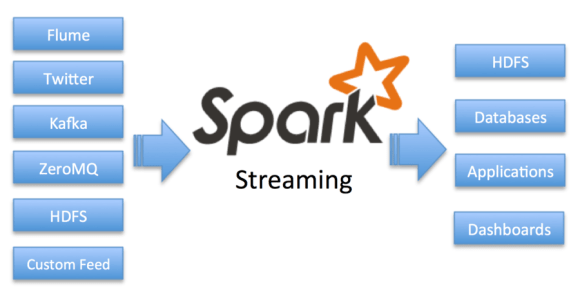- Before we compare Apache Beam with Apache Spark, we must see what the two are.
- Apache Beam refers to an integrated planning model.
- It uses a lot of streaming data processing functions that work on any output engine. It uses pipes in many places of use.
- Apache Spark describes a fast and common data processing engine on a large scale.
- Spark is a fast and standard processing engine compatible with Hadoop data.
Apache Beam:

- Apache Beam (Collection + strEAM) integrates bulk and processing data, while others often do so with different APIs.
- It is very easy to turn the streaming process into a collection process and vice versa, say, as the needs change.
- One of the main reasons for using Beam is the ability to switch between multiple runners such as -Apache Spark, Apache Flink, Samza, and Google Cloud Dataflow.
- Apart from Beam, an integrated planning model, different runners have different capabilities, making it difficult to provide a portable API.
- Apache Beam suggests flexibility and flexibility.
- Apache Beam is based on so-called abstract pipelines that can be used by different managers.
- This pipeline covers all stages of processing from data downloading, conversion, and finally output.
- Beam hides low-level items such as pushing, splitting, etc. engineers with these pipelines.
Apache Spark

- Spark is an open-source, distributed processing system used for large data loads.
- It uses cache memory and enhances query performance with faster analytical questions against data of any size.
- It provides development APIs in Java, Scala, Python, and R, and supports code reuse for all multiple tasks — bulk processing, interactive quiz, real-time analysis, machine reading, and graph processing
- Based on the MapReduce memory model from Hadoop MapReduce.
- Hadoop MapReduce is an editing model for processing large data sets with a consistent, distributed algorithm.
- Engineers can write very consistent operators, without having to worry about job distribution, and tolerating errors. Engineers can write very consistent operators, without having to worry about job distribution, and tolerating errors.
- With Spark, only one step is required in which data is read to memory, activities are performed, and results are written back — leading to faster performance.
- Spark comes packed with a variety of libraries for machine learning algorithms (ML) and graph algorithms.
Features of Apache Beam :
- Unified – Use a single programming model for both batch and streaming use cases.
- Portable – Execute pipelines in multiple execution environments. Here, execution environments mean different runners. Ex. Spark Runner, Dataflow Runner, etc.
- Extensible – Write custom SDKs, IO connectors, and transformation libraries.
Features of Apache Spark :
- Spark has a fast processing speed. Spark apps can run up to 100x faster in memory and 10x faster on disk in Hadoop clusters.
- Easy to use – Spark allows you to write scalable applications in Java, Scala, Python, and R.
- Developers get the scope to create and run Spark applications in their preferred programming languages.
- Not only does Spark support simple “map” and “reduce” operations. Supports SQL queries, streaming data, and advanced analytics, including ML and graph algorithms.
- with the help of spark, we can handle real-time data streaming.
- Spark can run independently in cluster mode, and it can also run on-Hadoop YARN, Apache Mesos, Kubernetes, and even in the cloud.
Benefits of Apache Beam :
- With Beam, collection and distribution are just two points regarding continuity of delay, completeness, and cost.
- There is no rock to read or rewrite from the collection to the stream.
- So, if you build a bulk pipe today but your delay requirements change tomorrow, you can easily convert it into streaming within the same API.
- The same pipe can be used in many ways. As data forms and working time requirements are separated.
- That means you do not have to rewrite the code when you move from an asset to something more advanced.
- It is possible to quickly compare options to find the right combination of environment and performance for current needs.
Benefits of Apache Spark :
- The best thing about Apache Spark is that it has a large open-source community behind it.
- It opens up a variety of big data opportunities.
- It comes with the ability to use multi-task loads, including interoperability questions, real-time analysis, machine learning, and graph processing.
- One application can combine multiple functions seamlessly.
- It can handle many mathematical challenges due to its ability to process low-memory data.
- Contains well-designed libraries for graph and mathematical algorithms
Conclusion :
We can say that both(Apache beam and Apache spark) are used for the solving same problem, also there is a small difference.
By look Apache beam looks like a framework, it hides the complexity of processing, and technical details and spark are the technology where you literally need to dive deeper.
Spark helps to simplify the challenging and computationally intensive task of high processing volumes of real-time or archived data, both structured and unstructured, seamlessly integrating relevant complex capabilities such as machine learning and graph algorithms.
References:


